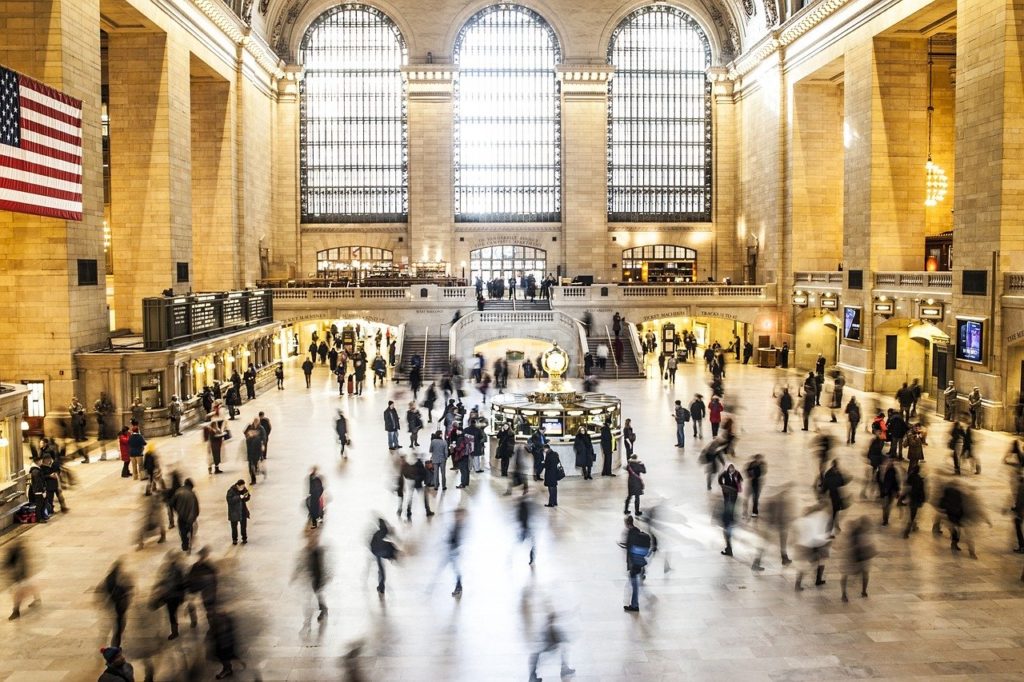
No one at the Metropolitan Transportation Authority (MTA), Long Island Rail Road (LIRR) or any elected official, including Governor Andrew Cuomo, Senators Charles Schumer and Kirsten Gillibrand, ever wants to talk about the real costs for the LIRR’s east side access to Grand Central Terminal. These may be closer to $15 billion, rather than $11.2 billion.
The original full funding grant agreement between the Federal Transit Administration (FTA) and MTA was approved in December 2006. The $2.63 billion of FTA grant funding remains unchanged (virtually all of which has already been spent) with the MTA serving as a local sponsor to cover the more than $6 billion in cost overruns. Ten years later, in August 2016, the FTA amended agreement was signed off by both FTA and the MTA. After years of negotiations, the MTA and FTA agreed on a deal that would reflect the current cost and schedule.
Both the cost went up and first revenue day of service slipped once more. Taxpayers could pay $12 billion in direct costs for this project. The odds have increased that riders may have to wait beyond Dec. 31, 2022, before boarding the first LIRR train to Grand Central Terminal.
The MTA has repeatedly increased the budget by billions and pushed back the first day of service for this line by 12 years. This includes other related projects, which are considered indirect and referred to by the MTA as “readiness projects” in support of East Side Access (ESA). They are carried off line from the official $11.2 billion project budget, according to the FTA MTA full funding grant agreement amendment, which might increase to $12 billion upon project completion.
Some of the indirect “readiness projects” include, but are not limited to, financing charges ($600 million), additional capacity improvements at Jamaica LIRR station ($450 million), along with numerous capital improvements east of Jamaica. They include construction of several thousand additional parking spots for new riders at numerous stations, increased bus feeder services provided by NYC transit, Nassau Inter-County Express (NICE), Suffolk County Transit and others to stations, completion of the Ronkonkoma branch ($450 million), main line third track between Floral Park and Hicksville ($2.6 billion), new pocket tracks ($44 million), new Huntington/Port Jefferson branch storage yard ($400 million), a new Ronkonkoma branch storage yard ($120 million), expansion of other storage yards, purchase of additional rolling stock, such as the new MU 9A series electric cars, and even more capital projects.
Without all of the above, the LIRR will not be able to achieve 100 percent utilization of this investment, including the promise of 24 trains per hour during peak service period. The two-year delay from 2022-24 in delivery of 88 M-9A electric cars will impact new ESA service. The LIRR will have to continue using M-3 cars from 1992, which as they continue to age, may become less reliable. There is no guarantee that all 202 new M-9 cars will be in service by March 2021.
It remains to be seen if the LIRR will have sufficient peak and spare electric cars to deliver on the promised 50 percent increase in service upon completion of both main line third track and ESA. How will thousands of LIRR commuters join Metro North riders already trying to board overcrowded NYC Transit Lexington Avenue subway trains?
On numerous occasions, the MTA has blamed Amtrak for being responsible for additional delays on the progression of east side access (ESA) to Grand Central Terminal project. Insufficient support from Amtrak has been responsible for periodic delays since 2006. This may continue for years due to ongoing work at Penn Station.
One significant failure in the 1990s was a fatal flaw in the purchase of both dual mode locomotives and double-decker passenger cars. Those responsible for design, engineering and bid specifications to support procurement of duel mode locomotives and double decker passenger cars failed to take into consideration height clearances for the 63rd Street tunnel between Manhattan and Queens. This tunnel was designed to be used at a future date to provide the LIRR with a direct connection to Grand Central Terminal. As a result, the LIRR fleet of 23 diesel-electric and 23 dual-mode locomotives, along with 134 double-decker passenger cars, will not be able to utilize ESA, for future service to Grand Central Terminal.
Travel time for thousands of LIRR riders bound for downtown Brooklyn, Wall Street, World Financial Center, World Trade Center or other destinations in downtown Manhattan via Atlantic Terminal will now have longer commutes. Depending on how long the wait is for a connecting train from Jamaica to Brooklyn on tracks 9 and 10, this could add between five to 10 minutes each way for a total of 20 minutes per day.
It is doubtful that the LIRR scoot service between Jamaica and Brooklyn will be running every few minutes like a subway. Imagine how long one could be waiting to or from events at the Barclays Center or other off peak trains. Thousands of riders whose trains originated to or from Atlantic Terminal who once had a one seat ride will lose this benefit. Everyone will now have to change at Jamaica.
This conflicts with the MTA promise regarding how the ESA project will save LIRR riders up to 40 minutes each day round trip in daily commutes. Don’t be so sure about the time savings. The new LIRR Grand Central Terminal is located below the existing lower and upper level Metro North platforms. This requires LIRR riders accessing trains to travel up to the equivalent of five stories before reaching street level.
What will happen if some escalators or elevators suffer mechanical problems and are removed from transit service? There is no equivalent west side yard for mid-day equipment storage. During rush hours, one tunnel will be used in bound and one out bound to serve the promised 24 hourly ESA-bound trains. With four platforms and eight tracks, most trains will have to return east bound for additional trips. What happens if a train is stuck in one of the two tunnels serving Grand Central Terminal?
Since 2001, the total direct cost for LIRR east side access to Grand Central Terminal has grown from $3.5 billion to $4.3 billion in 2003, $6.3 billion in 2006, $8.4 billion in 2012, $10.8 billion in 2014, $11.2 billion in 2018 and easily up to $12 billion in direct costs when finally completed.
The anticipated opening day for passenger revenue service date has slipped on numerous occasions from 2011 to December 2022. Over the coming years, will both this date and budget hold? No one should be surprised, if it ends up in 2023. The MTA has repeatedly missed every budget and recovery schedule for this project. They have ended up being worthless paper.
When it comes to completion of LIRR East Side Access to Grand Central Terminal, the 1960s LIRR motto, “Line of the Dashing Dan” in 2019 should be “Line of the Slow Moving Sloth.”
 Larry Penner is a transportation historian, writer and advocate who previously worked 31 years for the United States Department of Transportation Federal Transit Administration Region 2 New York Office. This included the development, review, approval and oversight for billions in capital projects and programs for the MTA, NYC Transit, LIRR, Metro North Rail Road MTA Bus along with 30 other transit agencies in NY and NJ. The views expressed are not necessarily those of the publisher or Anton Media Group.
Larry Penner is a transportation historian, writer and advocate who previously worked 31 years for the United States Department of Transportation Federal Transit Administration Region 2 New York Office. This included the development, review, approval and oversight for billions in capital projects and programs for the MTA, NYC Transit, LIRR, Metro North Rail Road MTA Bus along with 30 other transit agencies in NY and NJ. The views expressed are not necessarily those of the publisher or Anton Media Group.



















